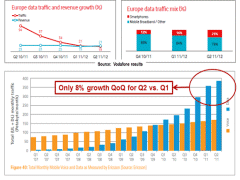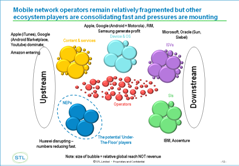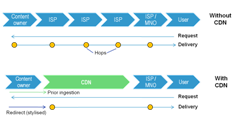
Mobile Broadband 2.0: The Top Disruptive Innovations
Key trends, tactics, and technologies for mobile broadband networks and services that will influence mid-term revenue opportunities, cost structures and competitive threats. Includes consideration of LTE, network sharing, WiFi, next-gen IP (EPC), small cells, CDNs, policy control, business model enablers and more. (March 2012, Executive Briefing Service, Future of the Networks Stream).
Trends in European data usage


